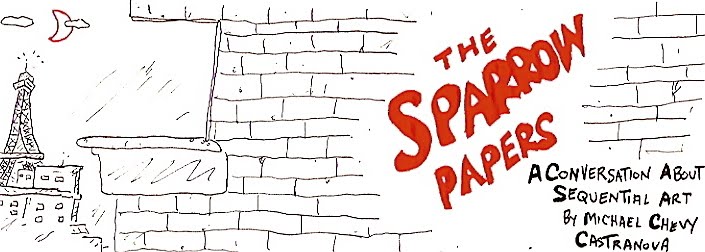
About two-thirds of the way into Hugo Pratt’s
Corto Maltese in Siberia is a picture of the protagonist racing across the top of a speeding train, hopping from one gun-mounted turret to another, arms out for balance, pistol in one hand and scarf straining in the wind … all the while his white sailor’s cap handsomely affixed. And the first time I saw it, about 10 years ago in a store in Paris, thumbing through one of those lovely, tall bande dessinées, I thought, this is pretty cool.
The story concerns the attempts of Corto, the gentleman-of-fortune captain without a ship, and his occasional ally Rasputin to capture an armored train carrying 160 tons of the Czar’s gold across Asia in 1919. Corto is working on behalf of an all-female Chinese secret society called the Red Lantern; Rasputin, as always, is working for himself. Along the way they must do battle with assorted villains including real-life crazy Baron von Ungern-Sternberg and a dead-ringer for Marlene Dietrich — this, in part, is Pratt’s version of the movie
Shanghai Express. (Whether Rasputin is supposed to be the real Grigori Rasputin, the Russian mystic who captivated Tsar Nicholas II and his family, is not clear; the character himself is never cozy with the truth.)
The exciting, intelligent tale is filled with dreams — as many of Pratt’s stories are — smart-aleck humor, poetry, philosophy and much derring-do, including a battle at sea and a train hijacking, an airplane crash, lots of gun fights and exotic locales, betrayals and heroics, and even Santa Claus and his reindeer.
And then there is the art itself — moody and stylish, in a
Milton Caniff-infleunced chiaroscuro vein, with dashing characters determined to change destiny to suit their overwhelming desires.
Corto Maltese in Siberia is probably my favorite of the dozen Corto adventures (there’s also an animated movie,
Corto Maltese: La Cour Secrete des Arcanes, but I’ve only found the DVD in French), but I love all of Hugo Pratt’s books. They certainly improved my French comprehension as I read all the Corto Maltese bande dessinées I could find.
The good news is
English-language copies be found at reasonable prices if you haunt the used bookstores. Track them down and take a look. Pratt’s stories are unequalled.
English language version:
Corto Maltese in Siberia (Corto Maltese) (More on Pratt, Corto, their separate adventures and Pratt’s art in future posts.)
(More on Pratt, Corto, their separate adventures and Pratt’s art in future posts.)







